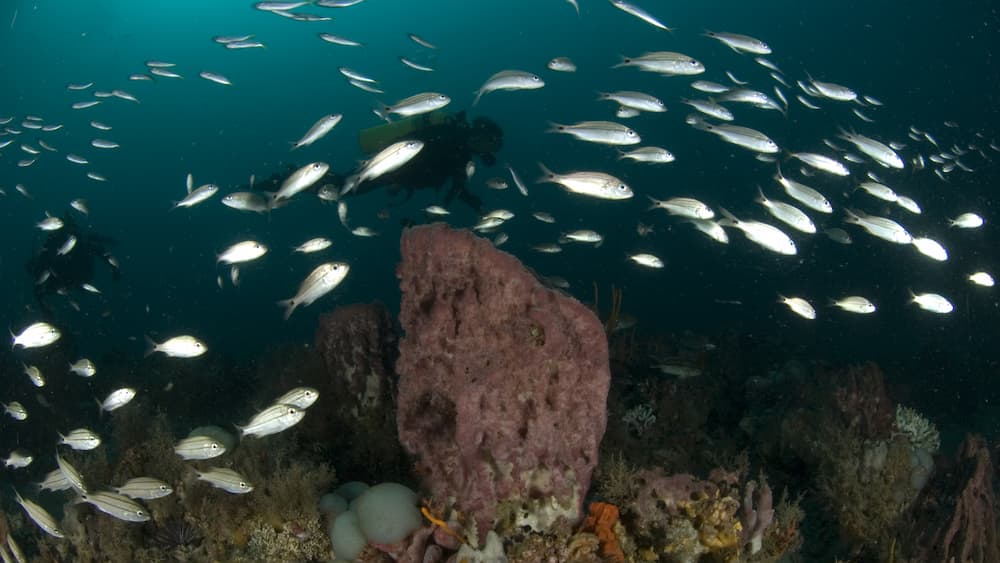Fishes and Sharks

Fishes
The live-bottom habitats of Gray's Reef provide for more than 200 different species of fish that live in and visit the sanctuary. These include larger species like snappers, groupers, mackerel, and sea bass and smaller ones like damselfish, blennies, and wrasses. The diverse population also includes endangered species like the Atlantic sturgeon and invasive species like the lionfish. The sanctuary is home to year-round residents like snappers, groupers, jacks, mackerel and reef fish, and seasonal visitors like bluefin tuna.
Did you know: The Georgia record for king mackerel was caught in Gray's Reef National Marine Sanctuary. Joe H. Bell caught a 75 lb 12 oz king mackerel in June 2004.
These photo galleries have a number of commonly seen fish that live at Gray's Reef National Marine Sanctuary.
Sharks
Sharks are the top predators at Gray's Reef. These animals help control populations of fishes and invertebrates and keep the reef biologically healthy. Sharks are fish, too, and use their gills to filter oxygen from the water. However, the body of a shark is made out of cartilage instead of bones like other fish.
Common shark species seen at Gray's Reef National Marine Sanctuary include blacktip, white, great hammerhead, nurse, sand tiger, and tiger sharks.
Explore these photo galleries to see the different types of sharks that live at Gray's Reef National Marine Sanctuary.
Studying Fishes and Sharks
Scientists have studied fishes at Gray's Reef for decades, and use in-water surveys, underwater filming, and other methods to learn about the fish and how they use the sanctuary. Technologies like underwater 360° cameras are used to study the predator-prey relationships of fishes—who eats whom on the reef. Sound recordings and listening for tagged fish—known as passive and active acoustics, respectively—helps sanctuary managers understand the movement and behaviors of animals. To learn more research in the sanctuary, visit the research projects page.
Using similar tagging methods, scientists are studying shark migration patterns in the Atlantic ocean and through Gray's Reef National Marine Sanctuary. The top three tagged sharks that swim through the sanctuary are tiger sharks, white sharks, and bull sharks. More information can be found in the 2019 Decade of Detections report.

